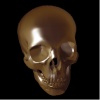Hi guys, I'm working on a project which uses DirectX 9 to render a detailed 3D scene and I have a problem. The program was developed for machines with Nvidia graphics on which it works correctly, but now it needs to be altered to run on a laptop with HD Graphics 3000 (2nd gen i7).
It seems that lighting isn't working at all; textures are visible but they look like they are being lit with white ambient lighting instead of the lights in the scene. Everything that isn't textured appears white (invisible against the white background) although some edges of objects are partially visible. Does this sound like a familiar problem to anyone? If anyone has any advice it would be greatly appreciated. I've already tried setting the program to load only one object and that didn't change anything, so it doesn't seem to be the amount of 3D data that's causing the problem.





